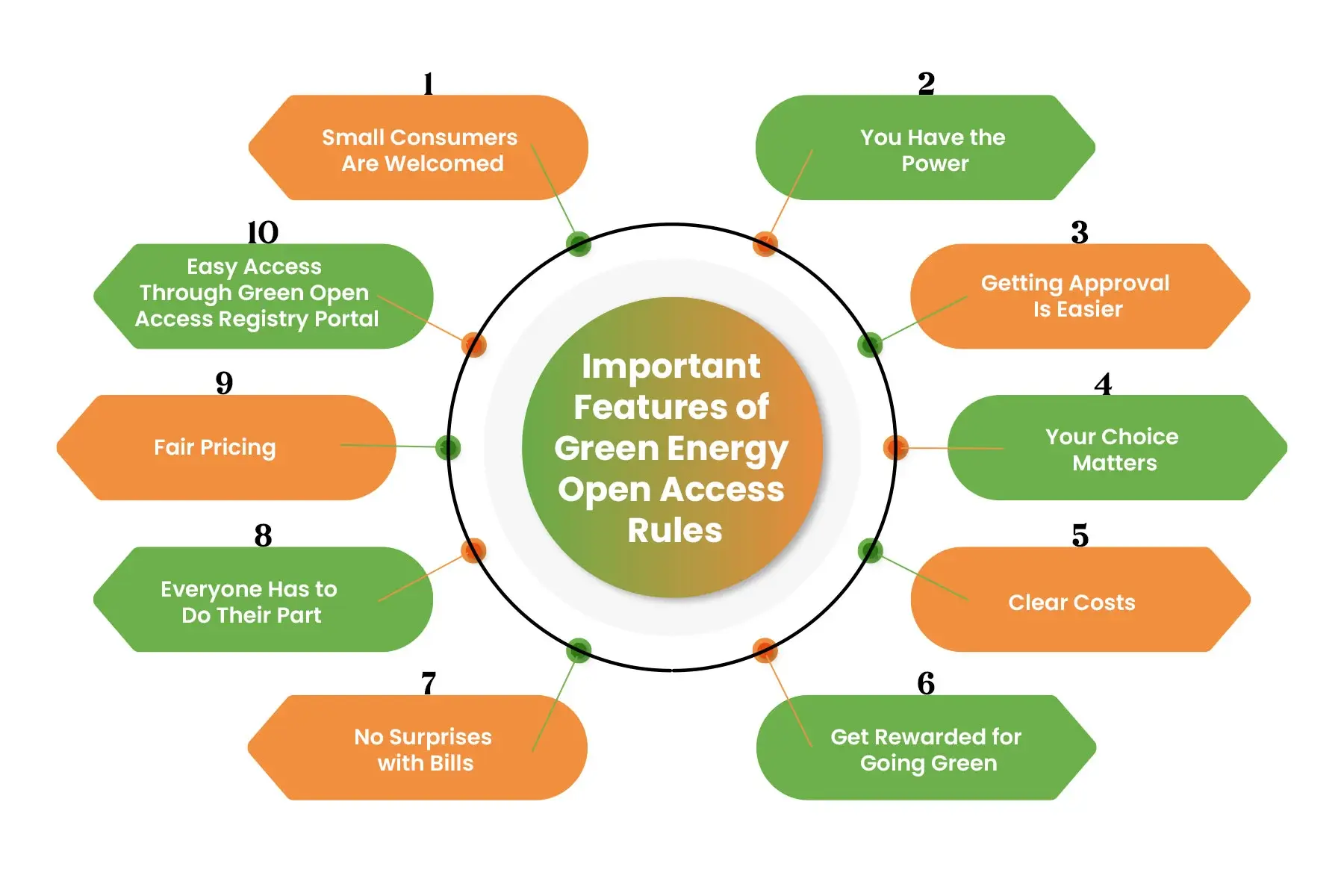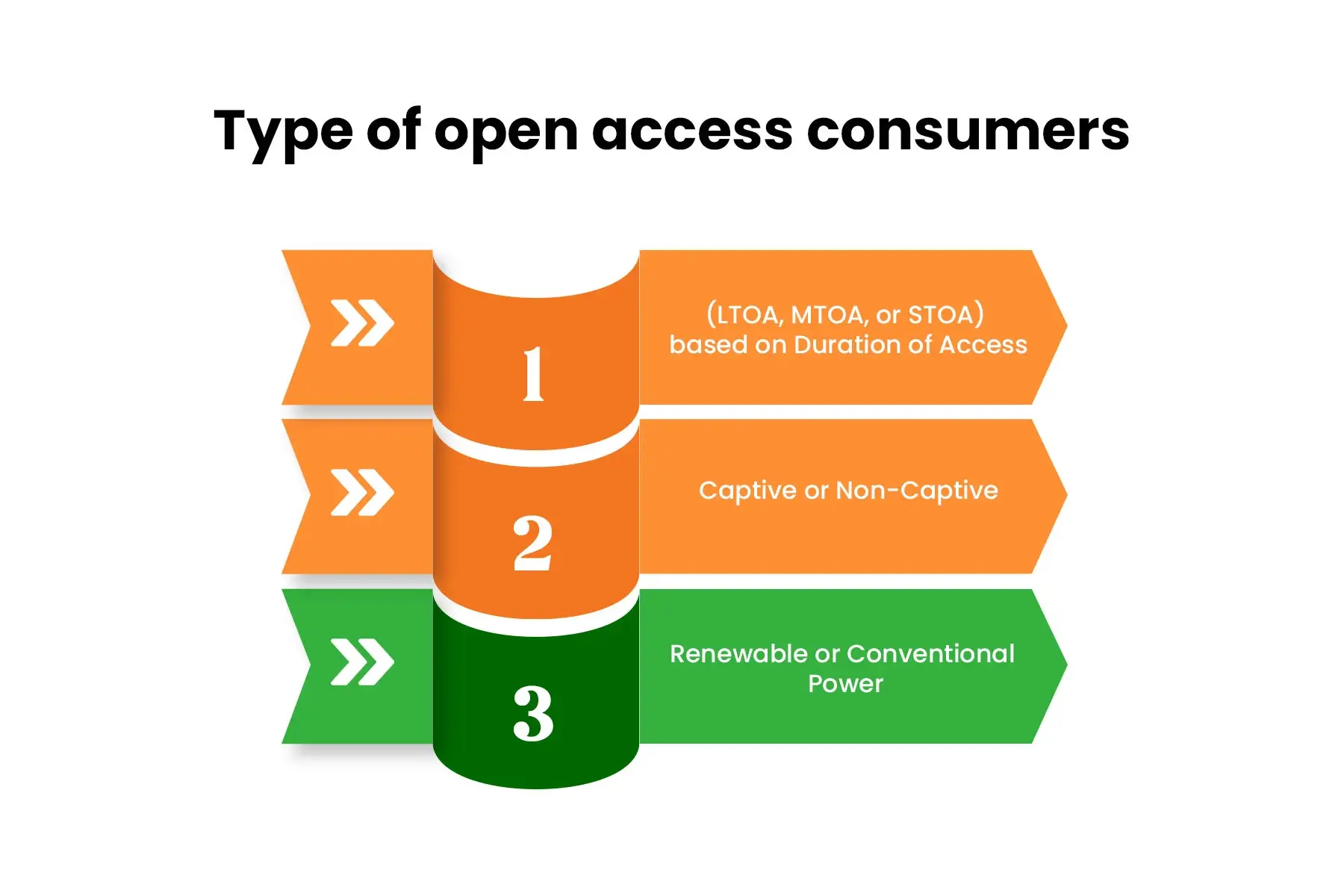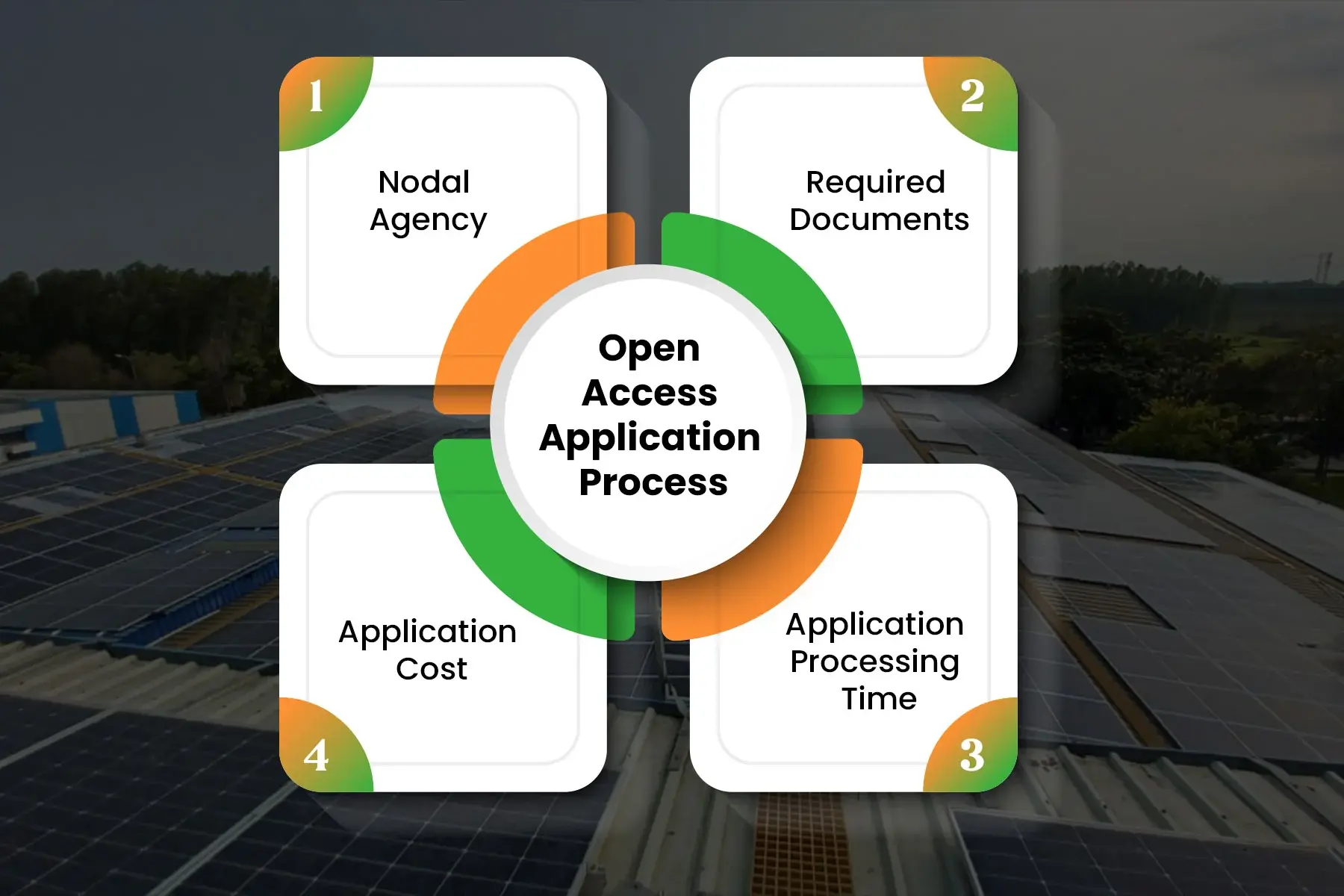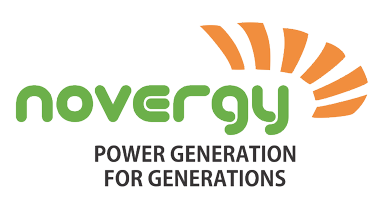In the ever-evolving landscape of renewable energy, the year 2023 promises to be a moment for solar power enthusiasts and sustainability advocates alike. Novergy Solar, a leading player in the solar energy industry, has been at the forefront of innovation and progress. Their commitment to ushering in a sustainable energy revolution has led them to navigate the intricate world of Green Open Access regulation with unwavering dedication.
Green Open Access is a game-changing concept in the realm of renewable energy. It offers businesses and industries a golden opportunity to reduce their carbon footprint and embrace clean energy solutions without the need for installing solar panels on their premises. Instead, they can tap into solar power generated off-site, fostering a greener and more sustainable future while simultaneously cutting operational costs.
In this blog post, we will give you an update about the latest Green Open Access as of 2023. latest regulations and updates that are shaping the solar energy landscape. From regulatory changes to technological advancements, understand the profound impact of Green Open Access in 2023 and how Novergy Solar is empowering businesses to transition towards a more sustainable, environmentally conscious, and economically beneficial energy future.
Green Energy Open Access Rules: A Brief Overview
The Green Energy Open Access rules are pivotal in ensuring that consumers have the opportunity to choose clean energy sources for their power needs. These rules empower consumers to access green energy, such as solar and wind power, by amending relevant regulations and ensuring consistency with the overarching principles of open access.
Key highlights of the Green Energy Open Access Rules include:
- Swift Approval Process: The nodal agency responsible for managing open access applications is required to approve these requests within a short time frame of fifteen days. This speedy approval process ensures that consumers can swiftly transition to green energy sources without unnecessary delays.
- Eligibility Criteria: To qualify for Green Energy Open Access, consumers must have a contracted demand or sanctioned load of a hundred kW and above. This threshold ensures that those with substantial power requirements can take advantage of green energy options.
- No Supply Limit for Captive Consumers: Captive consumers, those who generate and consume their power, face no limitations on the supply of power when utilizing Green Energy Open Access. This encourages self-sufficiency and reduces the burden on traditional power grids.
- Balancing High Variations in Demand: To maintain grid stability and avoid sudden fluctuations in demand, reasonable conditions, such as limiting the number of time blocks for changing power consumption, may be imposed. These conditions help ensure a smooth transition to green energy sources without disrupting the power supply.
Important Features of Green Energy Open Access Rules

- Small Consumers are Welcomed: These rules make it easy for smaller consumers to get green energy, not just the big players. So, whether you’re a big company or a small one, you can go green with your energy choices.
- You Have the Power: If you want green power, the rules say that companies must provide it to you. You don’t have to settle for the old, polluting energy sources anymore.
- Getting Approval Is Easier: The rules have made it simpler and faster to get permission to use green energy. You won’t have to wait forever for approval; it should come in just 15 days.
- Your Choice Matters: Companies can choose to use green power if they want to. It’s not forced on them, but it’s a good choice for the environment and their image.
- Clear Costs: You’ll know exactly what you’re paying for. The rules say that charges like transmission and wheeling fees must be transparent.
- Get Rewarded for Going Green: If you choose green power, you’ll get Green Certificates as a pat on the back. It’s a way of saying, “Thanks for helping the environment!
- No Surprises with Bills: There’s a limit on how much extra money companies can charge you for choosing green energy. This means you will avoid getting hit with unexpected costs.
- Everyone Has to Do Their Part: These rules make sure that everyone, not just a few, has to use renewable energy. They even include new green energy sources like hydrogen and ammonia.
- Fair Pricing: The price you pay for green energy is determined fairly, taking into account where the energy comes from and what it costs to deliver it to you.
- Easy Access Through Green Open Access Registry Portal: You can easily register and apply for Green Energy Open Access through the Green Open Access Registry portal. It’s a one-stop-shop for everything you need to know about green energy access.
New Amendment in 2023
On May 23, 2023, the Ministry notified the Electricity (Promoting Renewable Energy Through Green Energy Open Access) (Second Amendment) Rules 2023, ushering in a new era for green energy enthusiasts and consumers alike. The provisions came into action on 23-5-2023
- Revamped “Entity” Definition: Previously, an “entity” was any consumer with a contracted demand or sanctioned load of 100 kW or more, except for captive consumers who had no load limit. Now, the definition expands to include those with 100 kW or more, achieved through either single or multiple connections in the same electricity division of a distribution licensee.
- Unlimited Access to Green Energy: First Proviso, has been updated to grant all entities, whether through a single connection or multiple connections totalling 100 kW or more within the same electricity division, the eligibility to access Green Energy Open Access. Captive consumers, in particular, now enjoy unrestricted access to this green energy resource.
- Extended Surcharge Exemption: Rule 9 now extends surcharge exemption for electricity generated from offshore wind projects. The new deadline for commissioning such projects is December 2032, offering an extended window of opportunity compared to the previous deadline of December 2025.
Open Access Charges
- Distribution (Wheeling) Charges: are also known as wheeling charges, are the costs incurred when transporting solar power from one location to another through the local distribution network. Think of it as the fee for using their infrastructure. These charges vary by region and can significantly impact your solar project’s economics.
- Transmission Charges: Transmission charges come into play when solar energy must traverse long distances through high-voltage lines to reach a distant consumer or location. The costs depend on the amount of power and the distance it travels. If your solar project involves supplying power to a remote location, these charges deserve attention in your financial calculations.
- Cross Subsidy Surcharge: is a fee aimed at compensating distribution companies for revenue losses due to large consumers migrating to open access. It helps maintain the financial health of local distribution providers. These surcharges can differ between states and distribution companies, so be sure to account for them.
- Additional Surcharge: is a regulatory fee covering extra costs incurred by distribution companies due to open access arrangements. These costs can include infrastructure upgrades and administrative expenses. The specific charges depend on your solar project’s size and capacity, so consult with local utility and regulatory bodies for clarity.
- Banking Charges*: are also called energy banking charges, pertaining to storing excess solar energy generated during sunny periods for later use. These charges may apply when you feed surplus energy into the grid and withdraw it during low-production periods. Understanding banking charges helps optimize your solar project’s financial benefits, particularly if you’re considering energy storage solutions.
Waivers on Open Access Charges For Solar
| Parameters | Distribution (wheeling)
charges |
Transmission charges | Cross subsidy surcharge | Additional surcharge | Banking Charges* |
| Haryana | 0% | 0% | Solar (Captive) – 100%
Solar (Third party) – 0% |
Solar (Captive) – 100%
Solar (Third party) – 0% |
1.5 INR/kWh |
| Rajasthan | Solar (Captive/Third party) – 50%
Solar+storage (Captive/Third party) – 75% |
Solar (Captive/Third party) – 50%
Solar+storage (Captive/Third party) – 75% |
100% (Not levied) | Solar (Captive) – 100%
Solar (Third party) – 0% |
10% of energy delivered at the point of drawl |
| Uttar Pradesh | Solar (Captive/Third party) – 100% (interstate), 50% (Intra-state) | Solar (Captive/Third party) – 100%
(interstate), 50% (Intra-state) |
Solar (Captive) – 100%
Solar (Third party) – 100% |
100% (Not levied) | Solar – 12% of energy banked |
| Gujrat | Solar (Captive/Third party) – 0%
Hybrid (Captive) – 50% Hybrid (Third Party) – 0% |
0% | Solar/Hybrid (Captive) – 100%
Solar (Third party) – 0% |
Solar/ Hybrid (Captive) – 100%
Solar (Third party) – 0% |
Solar – 1.5 INR/kWh |
| Maharashtra | 0% | -100% (STU charges for RE are twice of that
for conventional fuel) |
Solar (Captive) – 100%
Solar (Third Party) – 0% |
0% (Additional surcharge also applicable for
captive) |
2% of energy banked |
| Madhya Pradesh | 0%
(GoMP to provide a grant of 4% in terms of energy injected to wind/solar projects) |
0% | Solar (Captive) – 100%
Solar (Third Party) – 0% |
0% (Additional surcharge also applicable for
captive) |
Not allowed (or at the discretion of discoms) |
| Karnataka | 50% | 50% | Solar (Captive) – 100%
Solar (Third Party) – 0% |
Solar (Captive) – 100%
Solar (Third Party) – 87% |
Banking not allowed |
| Andhra Pradesh | 0% | 0% | Solar (Captive) – 100%
Solar (Third Party) – 0% |
100% (Not levied) | Banking not allowed |
| Tamil Nadu | 50% | 50% | Solar (Captive) – 100%
Solar (Third Party) – 70% |
100% (Not levied) | Solar – Not allowed |
| West Bengal | 0% | 0% | 0% | 0% | Not allowed |
| Odisha | 80% | 80% | 100% | 100% (Not levied) | Not allowed |
| Jharkhand | Solar (Captive/Third party) – 50% | 0% | Solar (Captive) – 100%
Solar (Third party) – 0% |
100% (Not levied) | 2% of energy delivered at the point of drawl |
| Chhattisgarh | 100% | 100% | Solar (Captive) – 100%
Solar (Third party) – 50% |
100% (Not levied) | 2% of energy banked |
Type of Open Access Consumers
Open access activity can be categorised based on three primary parameters:
- (LTOA, MTOA, or STOA) based on Duration of Access :
- Long-Term Open Access (LTOA): Consumers with long-term energy requirements opt for LTOA. This provides them with a stable and reliable source of energy over an extended period.
- Medium-Term Open Access (MTOA): MTOA consumers have slightly more flexibility in their energy procurement, catering to mid-term needs.
- Short-Term Open Access (STOA): STOA consumers, on the other hand, require energy for shorter durations, often to meet peak demand or seasonal variations.
- Captive or Non-Captive:
- Captive Consumers: These consumers generate their own power for self-consumption. They may utilize solar panels or other renewable sources to meet their energy needs independently.
- Non-Captive Consumers: Non-captive consumers rely on external sources for their energy requirements, making them the primary users of open access systems.
- Renewable or Conventional Power:
- Renewable Power: As the world moves towards a sustainable future, an increasing number of consumers are choosing renewable energy sources like solar power. These consumers contribute to a cleaner and greener environment.
- Conventional Power: Some consumers may still rely on conventional sources like fossil fuels or grid electricity for their energy needs.
Open Access Application Process

- Nodal Agency: In most States, STUs (State Transmission Utilities) handle LTOA (Long-Term Open Access) and MTOA (Medium-Term Open Access), while SLDCs (State Load Dispatch Centers) manage STOA (Short-Term Open Access). Maharashtra and Chhattisgarh have their State Discoms as the nodal agencies. Even when SLDCs oversee the process, they operate as part of the STU.
- Required Documents: Acquiring an NOC (No Objection Certificate) from State utilities is the main challenge in securing open access approvals. In Chhattisgarh, Gujarat, Tamil Nadu, and Jharkhand, you need an NOC along with your open-access application, potentially causing delays and complications before submission. Moreover, the criteria for granting NOCs can be subjective and hard to verify for consumers.
- Application Processing Time: The processing time for open-access applications varies significantly from state to state. In Andhra Pradesh, LTOA applications are deemed approved within 30 days.
- Application Cost: The application fee structure for open-access applications differs based on the state, application period, load, connection point, and power source. Although the application fee varies widely across states, the cost per unit is generally minimal.
Parting Thoughts
As we stand on the precipice of 2023, the landscape of renewable energy and, in particular, green open access regulation has never looked more promising. Novergy Solar remains committed to pioneering innovation in the solar energy sector, making it easier for businesses and industries to embark on their journey towards sustainability. With the right regulations, incentives, and the collective efforts of consumers and industry leaders, we can all contribute to a future powered by clean, renewable energy and a healthier planet for generations to come.
For further details about solar power under our open-access program, please feel free to reach out to us at solar@novergy.net Our Open Access initiative is currently in operation across several states in the country and is steadily expanding its presence.

